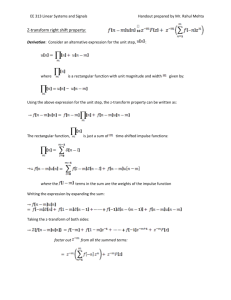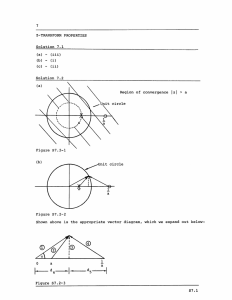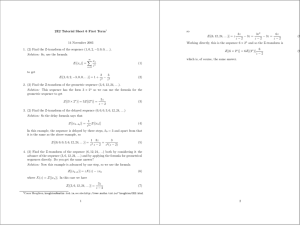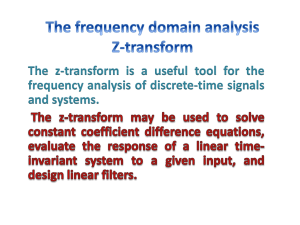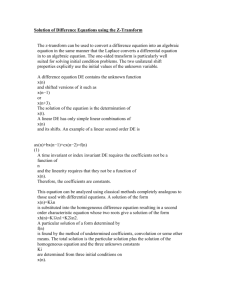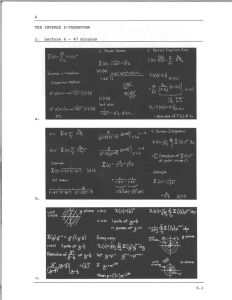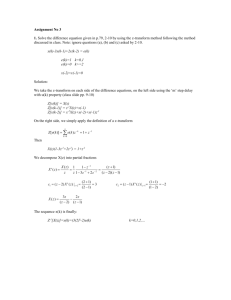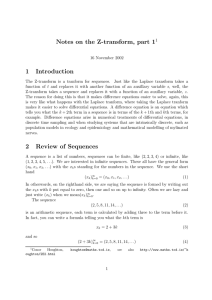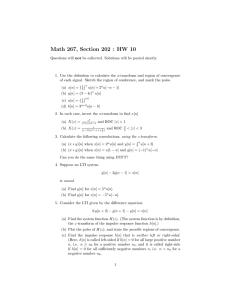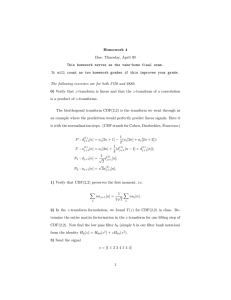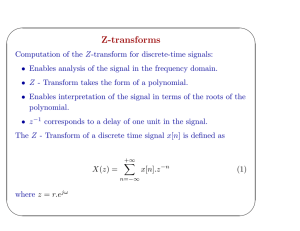a.l 2)1(n+ n( e
advertisement
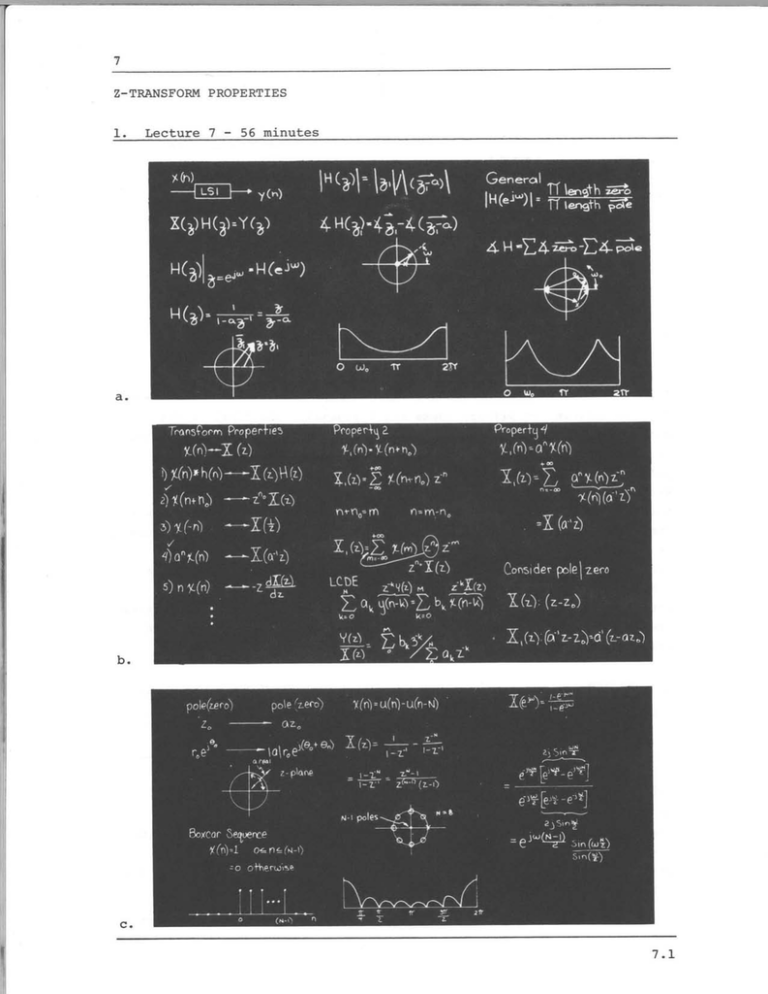
7 Z-TRANSFORM PROPERTIES 1. Lecture 7 - 56 minutes (.) a.l Transform Properbies ) x(n)hn-X (7 2)1(n+ n( - z 73 (i) 3) 1(-n') 5n Y-(n Z Bo-xcar 'P~oercp e 7.1 Fourier Transform of a rectangular sequence. SinwN sin N=15 15 1 A It\I d. 2. Comments In this lecture two primary ideas are discussed. The first is the determination of frequency response geometrically in the z-plane. This is particularly useful for identifying approximately the effect of pole and zero locations on the frequency response of a system. The second topic discussed in this lecture is that of properties of the z-transform. As with the Fourier transform, properties of the z-transform are useful for evaluating the z-transform and inverse z-transform as well as for developing insight into the relationship between sequences and their z-transforms. The more important properties are summarized in section 4.4 and table 4.2 (page 180) of the text. As stressed during the lecture the style in which many of these properties are proven is similar and it is important to develop a facility with this style rather than memorizing the various properties. 3. Reading Text: 4. Sections 4.4 (page 172), 5.2 (page 206) and 5.3. Problems Problem 7.1 In Figure P7.1-1 are shown three pole-zero patterns and three possible frequency response magnitude characteristics. By considering the behavior of the pole and zero vectors in the z-plane determine which frequency response characteristic could correspond to each of the pole-zero patterns. 7.2 unit unit circle circle or x x 0 (a) (b) (c) (i) (ii) Tr ?r (iii) 0 -- Figure P7.1-1 7.3 Problem 7.2 Consider a causal linear shift-invariant system with system function H(z) - = z_ 1- a zwhere "a" (a) is real If 0 < a < 1, plot the pole-zero diagram and shade the region of convergence. (b) Show graphically in the z-plane that this system is an allpass system, i.e., that the magnitude of the frequency response is a constant. Problem 7.3 With X(z) denoting the z-transform of x(n) show that: (i) X(l/z) is the z-transform of x(-n) -z dX(z) is dz (ii) the z-transform of nx(n) Problem 7.4 Consider a linear discrete-time shift-invariant system with input x(n) and output y(n) for which y(n - 1) - y(n + 10 y(n) + The system is stable. 1) = x(n) Determine the unit-sample response. Problem 7.5 X(z) = loge (1 - |at where (a) az-) < 1 and the region of convergence is Izi > jai. Determine the inverse z-transform by using the differentiation property. (b) Determine the inverse z-transform by using the power series method. Compare your result with that obtained in (a). * Problem 7.6 Suppose that we have a sequence x(n) from which we construct a new sequence x1 (n) defined as x([ ) n = 0, + M, + 2M,... x 1(n)= 0 7.4 otherwise (a) Determine X (z) in terms of X(z) (b) If X(e )W is as sketched below, sketch X (e "') for M = 2. X(ejW) Figure P7.6-1 7.5 MIT OpenCourseWare http://ocw.mit.edu Resource: Digital Signal Processing Prof. Alan V. Oppenheim The following may not correspond to a particular course on MIT OpenCourseWare, but has been provided by the author as an individual learning resource. For information about citing these materials or our Terms of Use, visit: http://ocw.mit.edu/terms.
